If you’ve been around the affordable microbrand scene for a while, chances are you’ve come across both Baltic and Nodus. These two names have become go-to picks in the sub-$1,000 microbrand space, each delivering a unique value proposition. Baltic leans into vintage charm married to clean execution, while Nodus relies on strong tool-watch DNA and a community-friendly ethos.
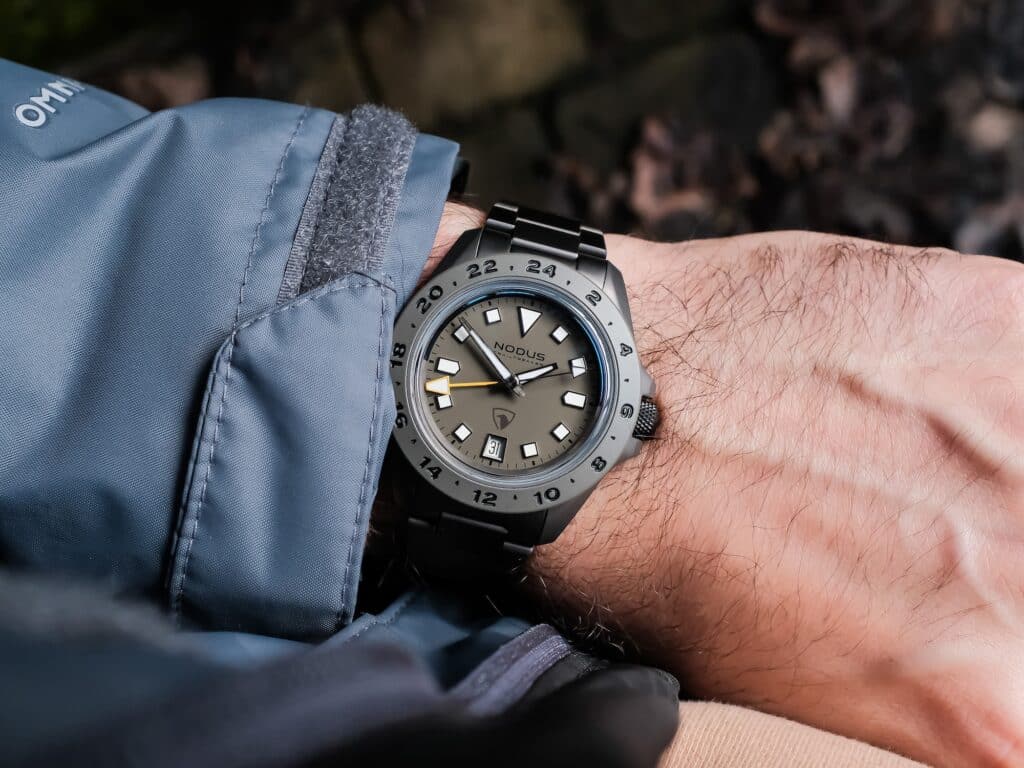
Over the past decade, we’ve personally spent wrist time with numerous models from both brands, from the Baltic Aquascaphe and MR01 to the Nodus Sector Deep and Contrail GMT. Hence, we’re in a good spot to judge not just what they say on the spec sheet, but how they wear, age, and feel in real life, and where they still stumble. In this long-term Baltic vs Nodus comparison, we’ll break down the fundamental differences that show up on the wrist—build quality, design intent, comfort, and longevity. That will help you figure out which of these microbrands better fits your style, budget, and daily routine.
Brand Identity & Philosophy: Vintage Elegance vs. Tool-Focused Intent
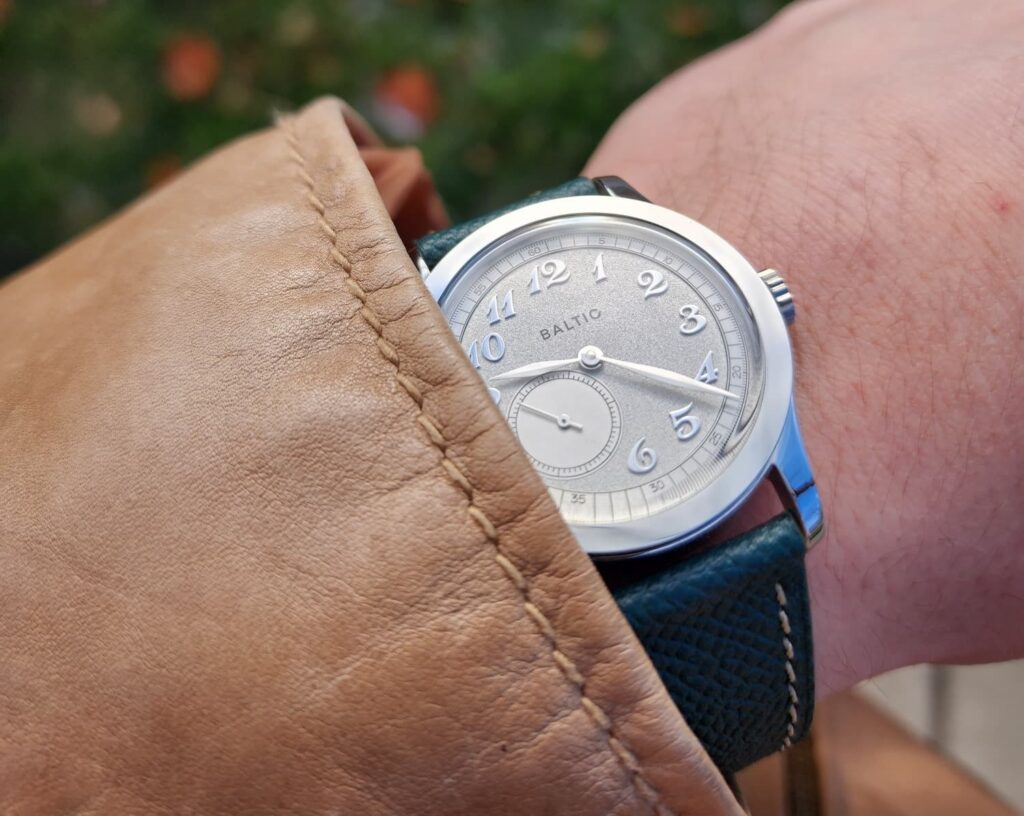
On one side, you have Baltic, a French microbrand that consistently leans into vintage proportions and dress-watch refinement. Their watches balance proportion, texture, and polish in a way that feels natural rather than nostalgic. The charm isn’t forced; it’s baked into the details that make them so wearable day to day. For instance, in our hands-on review of the MR01, we noted the 36 mm case, 9.9 mm thickness, and thoughtful touches like Breguet numerals and a micro-rotor movement that evoke classic dress watches. Baltic doesn’t chase bold tool-watch metrics; they aim for understated elegance, retro cues, and something that wears like a heritage timepiece without the premium price.

By contrast, Nodus opts for a more purposeful, function-first philosophy that’s less about looking back, more about getting things right in the present. Take their Sector Deep model: complete 500 m water resistance, bead-blasted finish, a dual-scale bezel, and thoughtful ergonomics like the destro-crown orientation. Our personal hands-on impressions showed the watch “feels more than the sum of its parts” thanks to intentional design decisions. Nodus isn’t hiding under dress cufflinks; it’s out there doing work, while still being accessible.
- If you’re drawn to a watch that whispers elegance and nods to past eras, Baltic might speak your language.
- If you’re after something that highlights wearability, foolproof design, and a bit of microbrand edge, Nodus clearly has the edge.
Catalog Scope & Core Strengths

When you peer into the catalog of Baltic, what stands out is thoughtful focus. Over years of hands-on time, we’ve found that Baltic’s strength lies in delivering vintage-inspired pieces that punch above their price point. For example, in our dedicated review of the Hermetique Tourer, we noted features like a boxed double-dome sapphire crystal and a reliable Miyota 9039 movement, highlighting the brand’s intention to blend style with substance. The result? A microbrand catalog that stays manageable but hits the core marks for someone shopping “affordable watches” who cares about design, quality, and wearability. Baltic doesn’t flood you with options. Instead, they refine a particular look and feel and execute it consistently.

In contrast, Nodus plays slightly differently: its catalog leans wider in purpose. From field and dive designs to GMT travel-ready models, the coverage signals a brand ready for varied use. From our personal testing experience with the TrailTrekker (a collaboration with Raven) highlighted this. The quick-adjust NodeX clasp, 39.5 mm case size, Diamond-like-Carbon (DLC) finish, and adventurous aesthetic show how Nodus approaches breadth without losing identity. That said, the catalog doesn’t feel scattered, with almost every piece carrying the same “tool-watch meets value” DNA. For someone looking through “best microbrand watches under $500–1000”, Nodus offers versatility you can wear in different contexts.
- Baltic earns its value through focus. Every release feels deliberate, refined, and tied to a clear design language that favors proportion and character over variety for its own sake.
- Nodus earns its value through range. Its catalog stretches from dive to field to travel pieces, each carrying the exact tool-watch specifics and attention to real-world function.
Design & Wearability: Timeless Restraint vs Functional Versatility
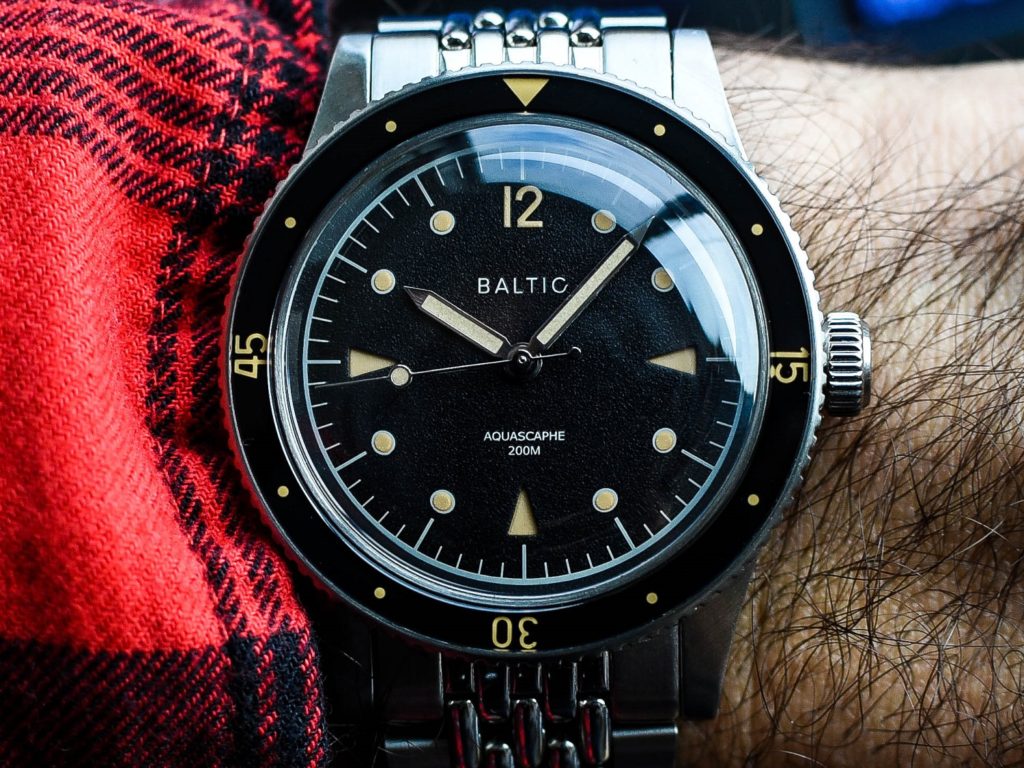
Baltic’s design language thrives on quiet control. The Aquascaphe, which our review team spent significant time with, captures that balance perfectly. A hybrid sandwich dial adds depth without clutter, while gilt accents and a matte texture shift subtly with the light. It’s elegant without pretense. The sharp, well-proportioned hands feel made for this dial, and the beads-of-rice bracelet completes the experience: comfortable, flexible, and finished far better than the price suggests. Polished beads catch light, brushed links hide wear, and the clasp keeps things simple and secure. On the wrist, it feels classic yet easygoing: the kind of vintage-inspired design that wears naturally every day rather than looking like a costume piece.
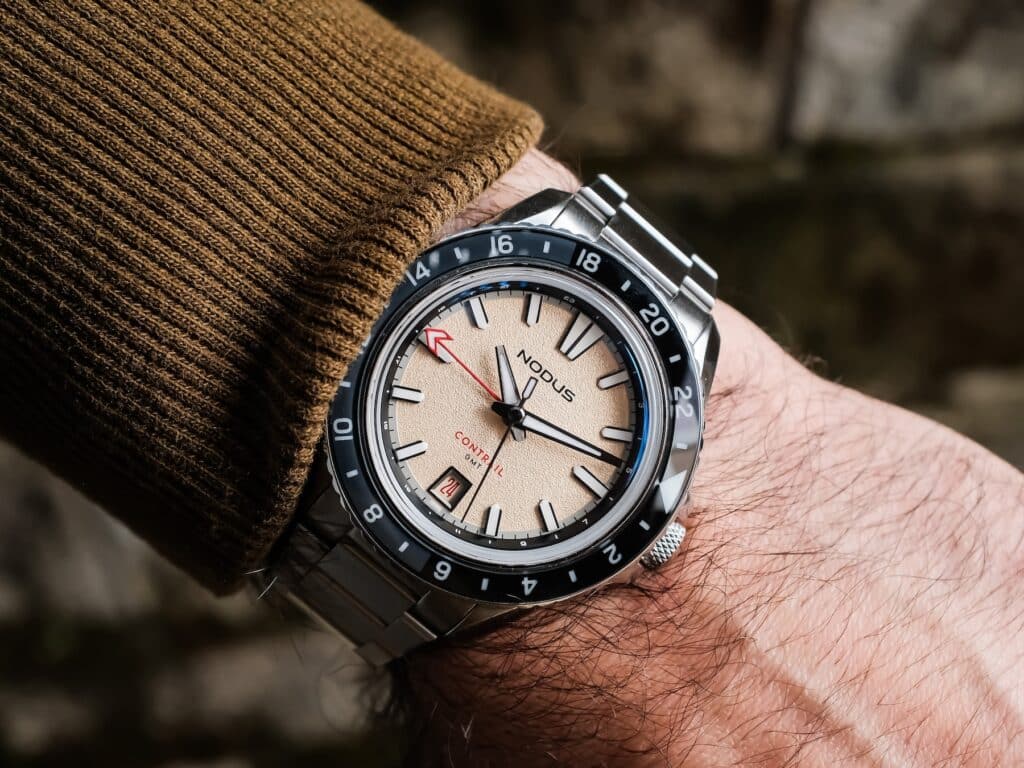
Nodus takes a more purposeful route. The Contrail GMT, which we rigorously tested, shows how the brand refines utility into comfort. The textured dial added warmth and depth, while the bold handset and roulette date wheel kept things legible and lively. Tracking multiple time zones was intuitive, and the proportions stayed balanced across the board. The H-link bracelet feels practical and solid, tapering smoothly and pairing with the NodeX clasp that allows quick micro-adjustments on the fly. On the wrist, it’s versatile, confident, and practical.
- Baltic builds with restraint and charm, keeping things reserved and dressy.
- Nodus designs for modern comfort and function: two different philosophies that both hit the sweet spot for real-world wear.
Build Quality & Technical Approach
Both brands build watches meant to last, but their construction approaches reflect different priorities.
Movements:
Baltic keeps its builds clean, reliable, and proudly mechanical. Across its lineup, the brand leans on proven Japanese and Chinese calibers. The Miyota 9039 powers both the Aquascaphe and Hermétique Tourer, while the MR01 features the Hangzhou 5000A automatic movement. All are regulated in-house in France, with Baltic emphasizing precision through careful adjustment rather than decoration. In our Aquascaphe testing, the 9039 ran smoothly at 28,800 vph with a 42-hour reserve and no phantom date click. These small but thoughtful details speak about Baltic’s methodical approach.
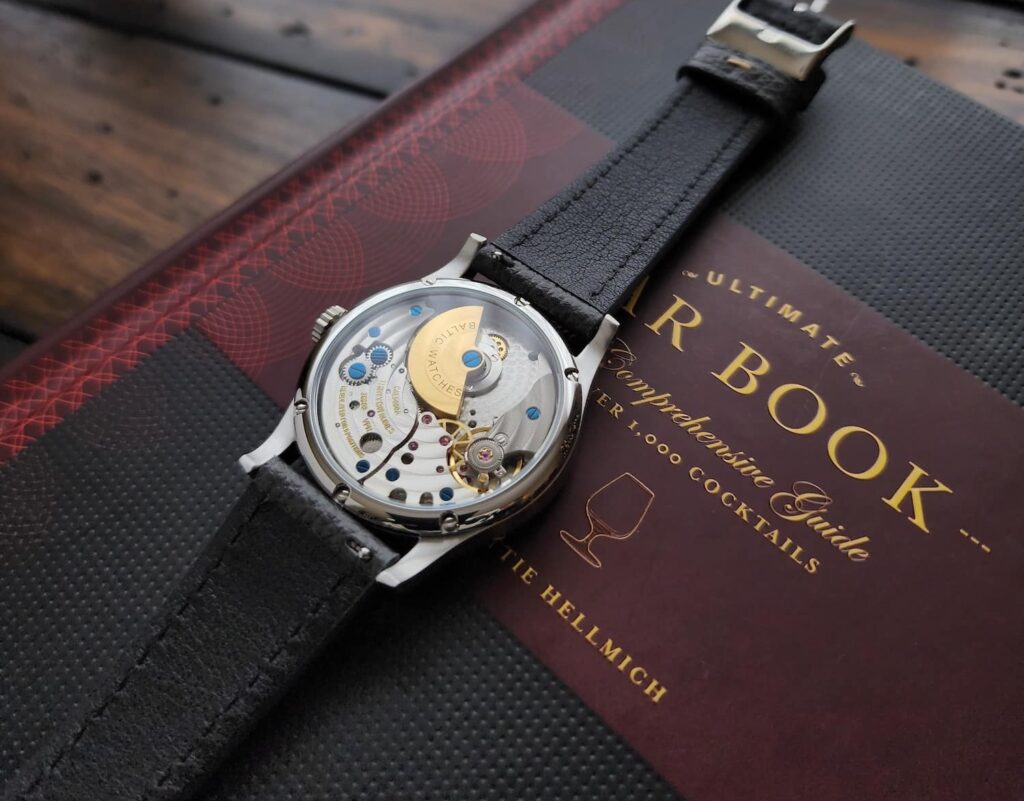
Nodus takes a more technical route, focused on function and precision. The Contrail GMT and Raven TrailTrekker both feature the Miyota 9075. During testing, the 9075 impressed with tight alignment, smooth hand jumps, and real-world accuracy within a few seconds per day. Each movement is regulated in-house to roughly ±8 seconds daily, which mirrors what we observed on the wrist. The Sector Deep sticks to a familiar favorite: the Seiko NH35 automatic and is regulated by Nodus to ±10 seconds, for tighter performance than most stock movements. That kind of precision shows how Nodus engineers for dependability, not flash.
Case Construction & Finishing:

Baltic continues to impress with how much care it puts into simple steel. The Hermétique Tourer we tested felt thin, compact, and brushed in all the right places. At 37 mm, the proportions hit a sweet spot, and the subtle polished bezel adds enough flash without taking away from the tool-watch feel. The integrated crown is a clever touch too; it sits flush when pushed in, giving the case a clean, uninterrupted profile. It’s not perfect, though. Hand-winding can be a bit fiddly, but that’s a small trade-off for the sleek fit and comfort. After extended wear, the brushing held up well, hiding minor marks better than expected.
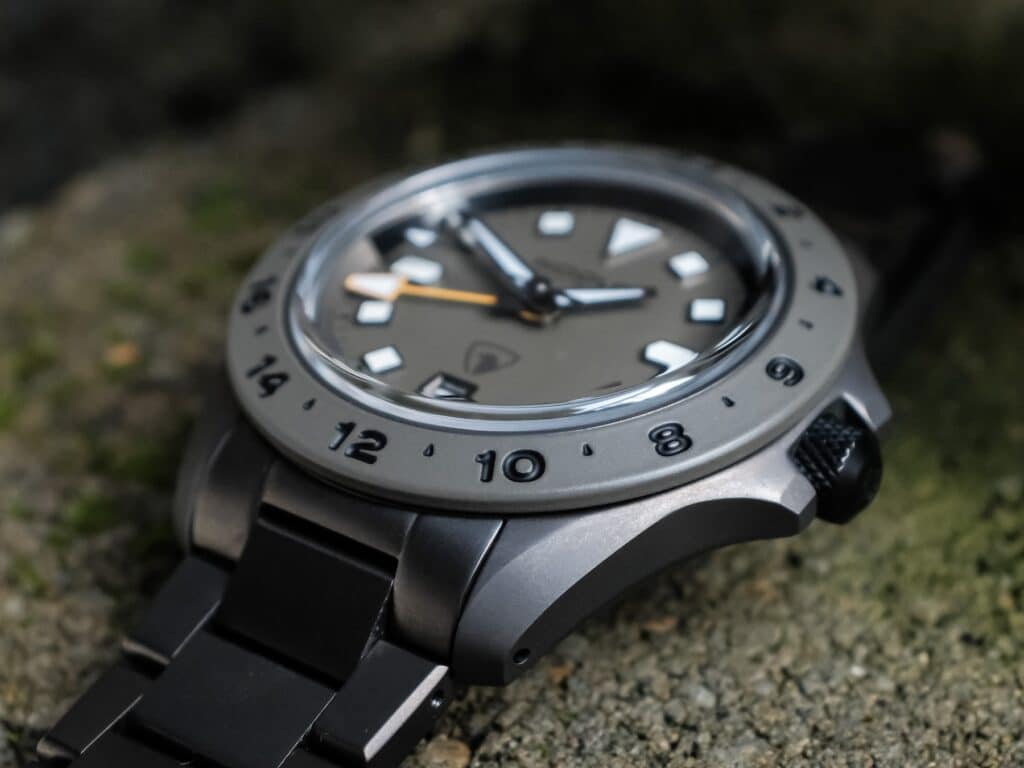
Nodus goes in a different direction: tougher, moodier, more deliberate. For instance, while reviewing the Nodus Raven TrailTrekker, the grey DLC case finishing looked fantastic in person: not glossy, not flat, just right. The sand-colored Cerakote bezel felt functional and visually distinct, like something built for gear-heavy travel or field use. The lack of polished surfaces and unnecessary flash serves the watch’s sporty, utilitarian vibe. On the wrist, it stays low, balanced, and easy to wear all day. The entire package feels tight and confident, the kind of build that can take a beating without looking worse for it.
Crystals:

Baltic mostly fits sapphire across the board, and that’s a big reason their watches feel more premium than their price suggests. For instance, during our time with the Hermetique Tourer, we noticed that it features a boxed double-domed sapphire crystal. That adds a jewel-like quality to the watch, catching light softly without overdoing reflections. The Aquascaphe also has double-domed sapphire for improved scratch resistance and clarity. The MR01, however, goes entirely vintage with a Hesalite crystal: warm, slightly soft around the edges, and full of that gentle distortion that makes older dress pieces so inviting.

Nodus takes a more utilitarian approach. The Contrail GMT we tested features a box sapphire crystal for a bit of visual depth without distortion. The Raven Trail Trekker adds a box sapphire with a blue underside AR coating that keeps reflections low while preserving color accuracy. The Sector Deep goes with a flat sapphire: no frills, just clear and tough. Across the board, Nodus executes sapphire for usability first: crisp, durable, and built to handle real wear.
Water Resistance & Lume:

Baltic has a knack for making real-world durability feel effortless. The Hermétique Tourer offers 150 m of water resistance without a screw-down crown, something we didn’t expect to trust this much until we wore it. While testing, it shrugged off daily use easily, and the C3 X1 Super-LumiNova kept a soft, steady green glow going long after dark. The Aquascaphe goes full dive-ready at 200 m, with a fully lumed dial layer that lights up evenly and looks great doing it. Even the MR01, limited to 30 m, feels honest about what it is: a dress piece that doesn’t pretend to be tough.

Nodus turns that dial toward performance. The Contrail GMT and Raven TrailTrekker both offer 200 m of water resistance with screw-down crowns that feel tight and purposeful. Their BGW9 Grade A lume glows a clean, bright, even, practical aqua blue when the sun drops. The Sector Deep cranks it up to 500 m without becoming a brick, and its lume output borders on ridiculous in the best way.
- Baltic earns its reputation through refined simplicity and reliable mechanics. Its well-proportioned cases, proven movements, and clean finishing highlight comfort and everyday dependability over excess.
- Nodus stands out for precision and purpose-built toughness. Regulated movements, rugged coatings, and bright BGW9 lume make its watches feel dialed-in for real-world adventure.
Community and Resale
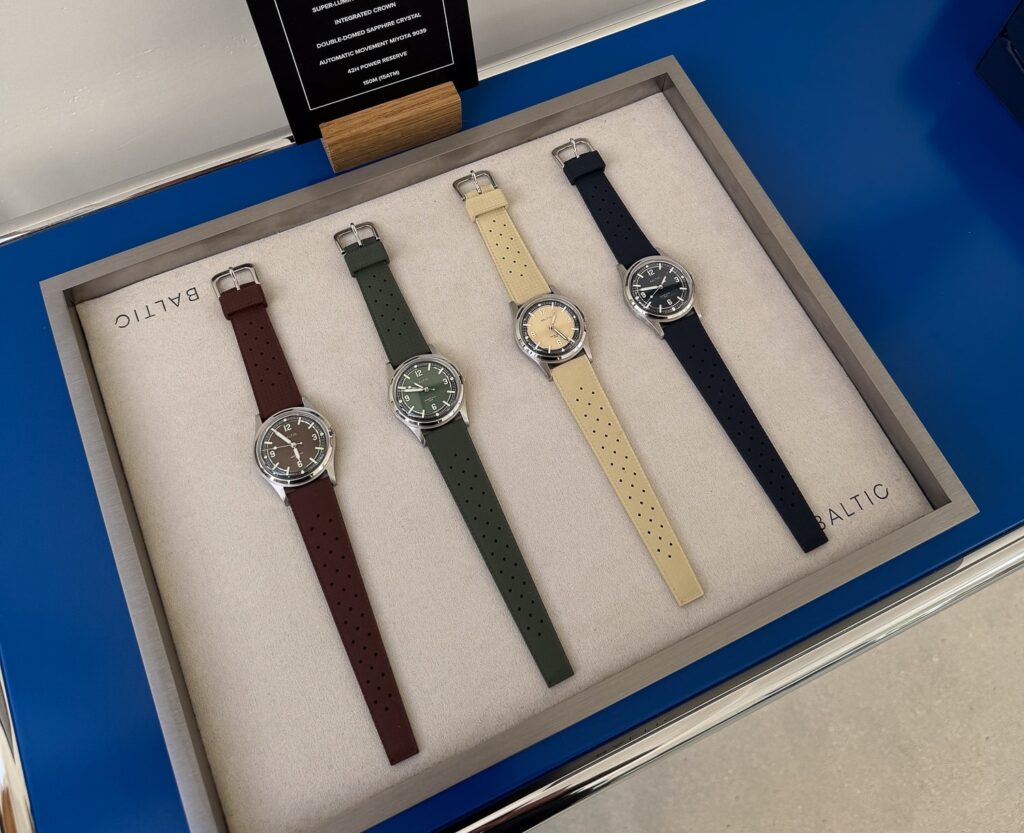
Baltic’s following feels built on ownership, not hype. The kind of folks who buy an MR01 or an Aquascaphe end up keeping them. They’re watches that invite daily wear rather than flipping. We’ve seen the same models pop up on wrists years later, often showing a bit of patina and pride rather than a “for sale” tag. The brand’s limited runs and consistent design language help maintain steady values, but that’s not what drives loyalty. It’s the shared appreciation for thoughtful design and mechanical honesty that keeps Baltic fans wearing, not trading.
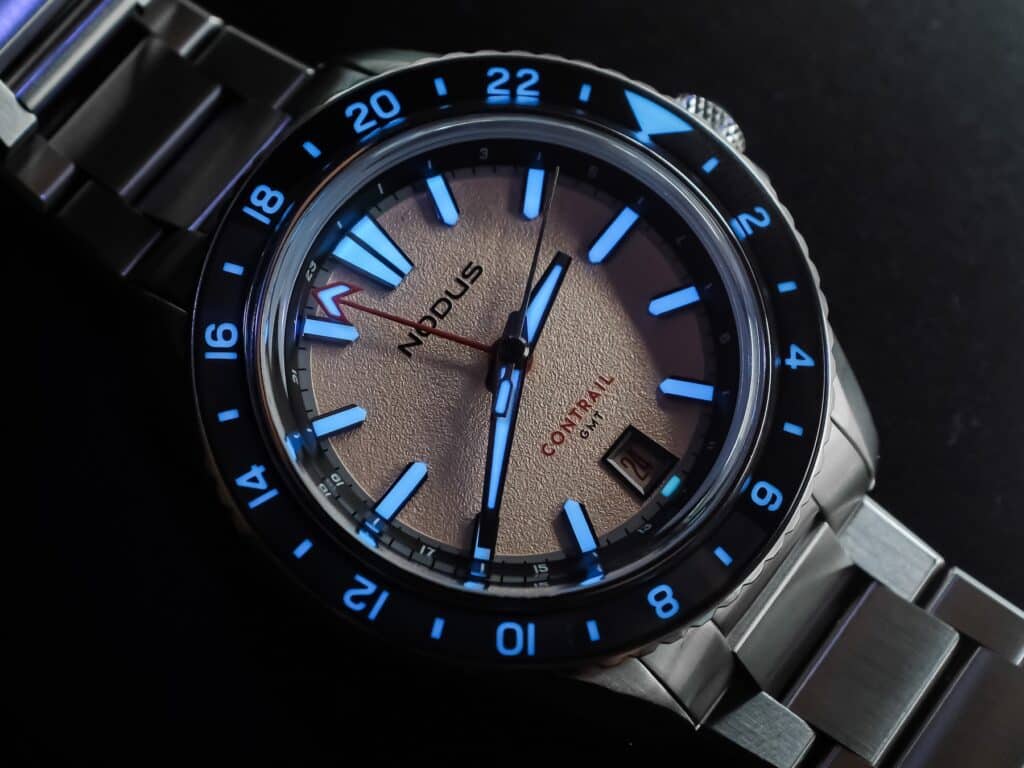
Nodus runs on conversation. Each new release feels like a continuation of feedback from the last: the Contrail GMT, TrailTrekker, and Sector Deep all show refinements that clearly come from enthusiasts who wear their watches hard and speak up about what works. Because of that, Nodus pieces tend to circulate within the same crowd: bought, worn, and occasionally passed along to another collector who gets the appeal. It’s less about flipping and more about participation: a community that stays active because the brand actually listens.
- Baltic builds loyalty through genuine wear and shared appreciation.
- Nodus keeps its circle engaged through evolution, feedback, and hands-on enthusiasm.
Final Takeaway: Which Brand Offers Better Value?

After spending significant wrist time with several Baltic models, it’s clear the brand’s strength lies in refinement and restraint. You’re not paying for hype or overengineering; instead, you’re paying for proportion, finishing, and an attention to detail that feels far more expensive than it is. Prices generally hover in the $400–$800 range, and the value comes from how these watches wear and age, not what they might resell for.
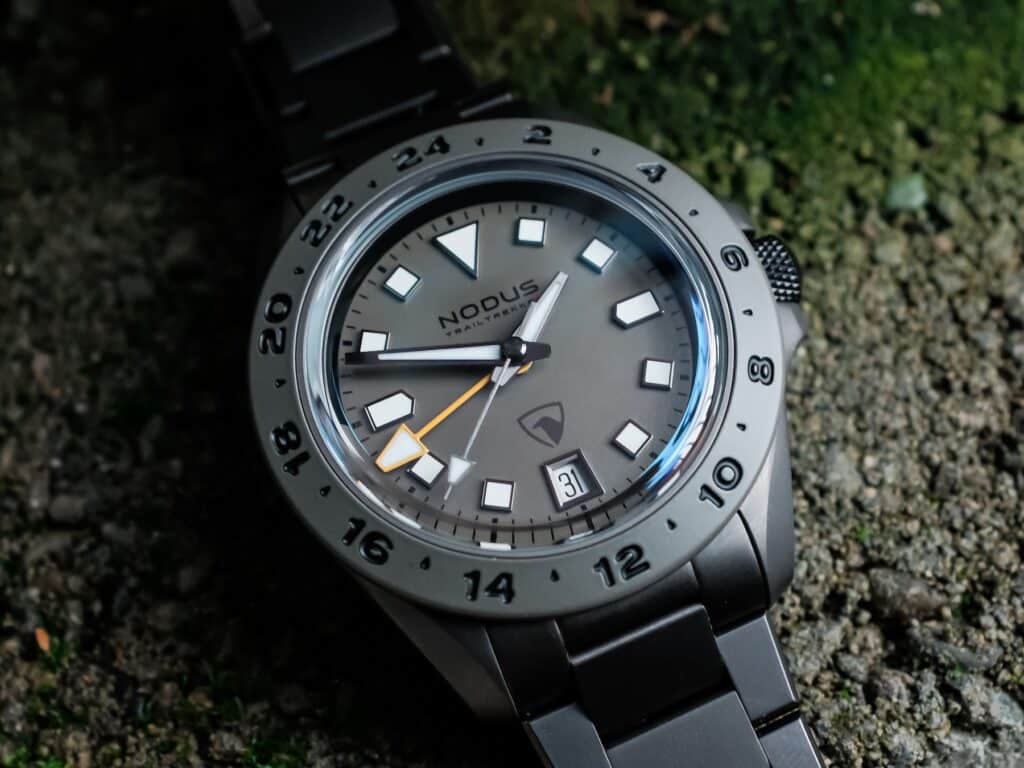
Nodus takes value in a different direction, through technical precision and tough builds. Their watches show how much the brand has evolved, each iteration tightening specs, improving finishing, and listening to what enthusiasts want. The result is a lineup that feels engineered to perform first, impress second. At roughly $500–$1,000, Nodus gives you tool-watch credibility, excellent regulation, and the kind of wearability that keeps it in steady rotation.
Who Each Brand Is Best For:
Baltic: Enthusiasts who value vintage-inspired design, balance, and subtlety. They’re the kind of watches that complement your day rather than define it.
Nodus: Collectors who want modern capability, field-ready durability, and the satisfaction of owning something built with precision and purpose.

Co-Founder and Senior Editor
Kaz has been collecting watches since 2015, but he’s been fascinated by product design, the Collector’s psychology, and brand marketing his whole life. While sharing the same strong fondness for all things horologically-affordable as Mike (his TBWS partner in crime), Kaz’s collection niche is also focused on vintage Soviet watches as well as watches that feature a unique, but well-designed quirk or visual hook.

Seems like a fair assessment overall. But I have to mention my personal bias toward Baltic due to more than a few reviews mentioning build quality issues. I like their style very much, but likely would not buy one due to questionable QC reputation.